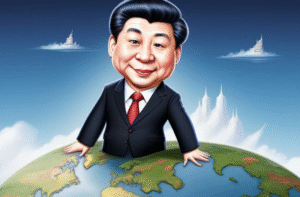$LMT $GD $RTX
#Ukraine #Pentagon #ArmsDeal #DefenseSpending #Geopolitics #MilitaryAid #WarEconomy #Security #Stocks #GlobalTrade #DefenseSector #Conflict
The Pentagon has unveiled a $725 million arms package for Ukraine, marking the largest single allocation since the staggering $1 billion package announced earlier this year in April. This significant step further underscores the ongoing U.S. commitment to bolstering Ukraine’s defensive and offensive military capabilities amidst the entrenched conflict with Russia. The latest tranche includes advanced artillery systems, precision-guided munitions, radar systems, and various support equipment designed to enhance Ukraine’s operational effectiveness on the battlefield. As this announcement ripples through the financial landscape, companies within the defense contracting sector are expected to attract heightened investor interest, particularly heavyweights such as Lockheed Martin ($LMT), General Dynamics ($GD), and Raytheon Technologies ($RTX), which have historically benefited from government defense spending.
The move also demonstrates the broader economic undercurrents in play, particularly as the defense sector continues to prove resilient in the face of global economic uncertainties. With U.S. fiscal policy increasingly leaning on bolstering military spending, investors are likely to monitor not just the profit margins for defense stocks but also their ability to secure further contracts. The defense sector often operates independently of general market cycles, making it a haven for investors seeking stability amidst broader market volatility. Companies like $LMT and $RTX, which are already industry leaders in aerospace and defense, stand to benefit significantly from continued geopolitical tensions and government-backed contracts. Moreover, this stream of military aid to Ukraine could stimulate further production runs of advanced weaponry, potentially creating ripple effects along the supply chain, impacting materials suppliers and subcontractors as well.
At a geopolitical and trade level, the move also sends a clear message to U.S. allies and adversaries. The sustained defense aid from the U.S. to Ukraine showcases a commitment not only to Ukraine but also to the NATO-allied bloc as a whole. Global trade relationships may shift as these military shipments influence broader diplomatic dynamics in Eastern Europe. Defense companies with robust portfolios and diverse operations across geographies may likely explore secondary arms deals with partner nations bolstering their defenses. Moreover, the increased production demand for military equipment and materials could positively impact related manufacturing industries, including steel, semiconductors, and raw materials, injecting new vitality into specific industrial sectors.
However, the decision does not come without challenges. The expansion of such high-ticket defense packages has prompted criticism over the potential strain on U.S. federal spending and its potential implications for the national debt. Nonetheless, Wall Street’s reaction thus far to similar announcements has leaned positive as investors continue to view the defense sector as insulated from the challenges of inflation and global supply chain disruptions. Additionally, while the macroeconomic impact could amplify volatility in energy and commodity prices tied to this geopolitical conflict, continued assistance to Ukraine may serve as a stabilizer for Europe, reducing the risk of further economic shocks in the region.











Comments are closed.